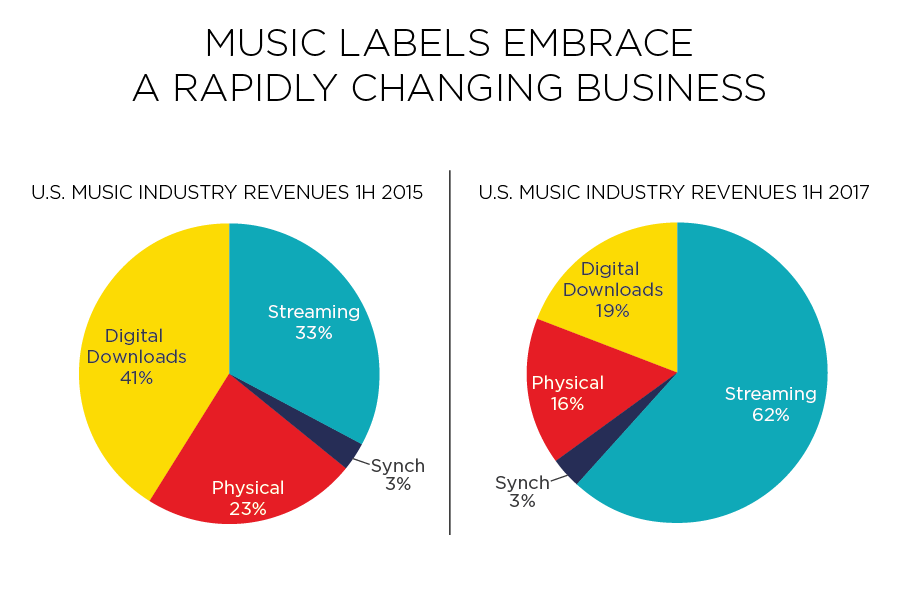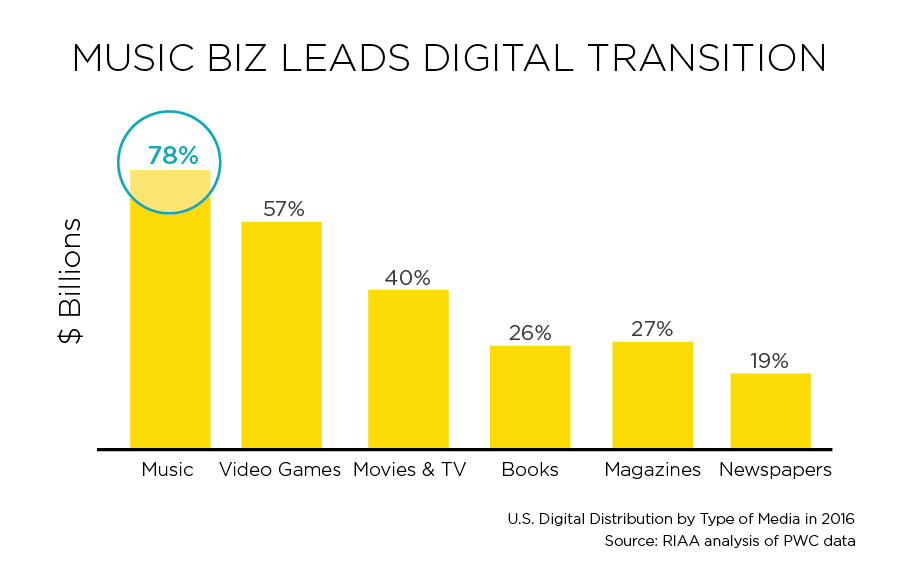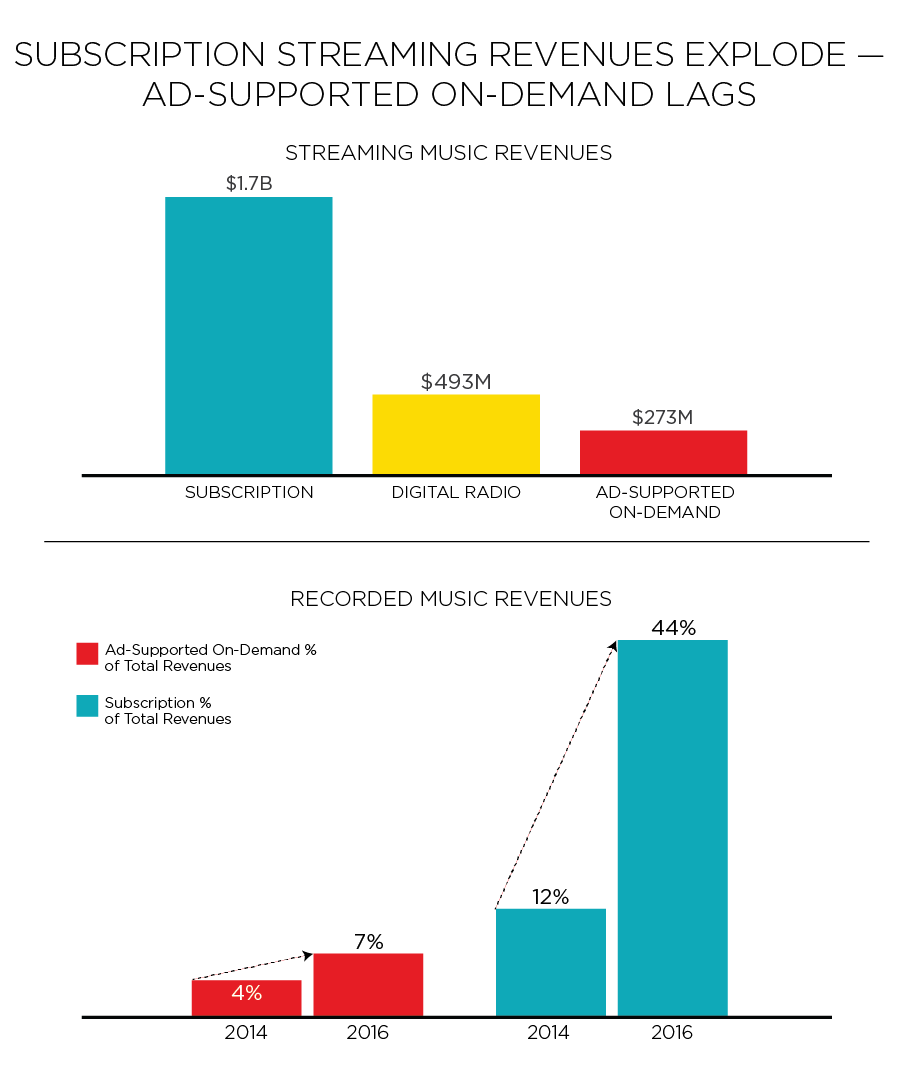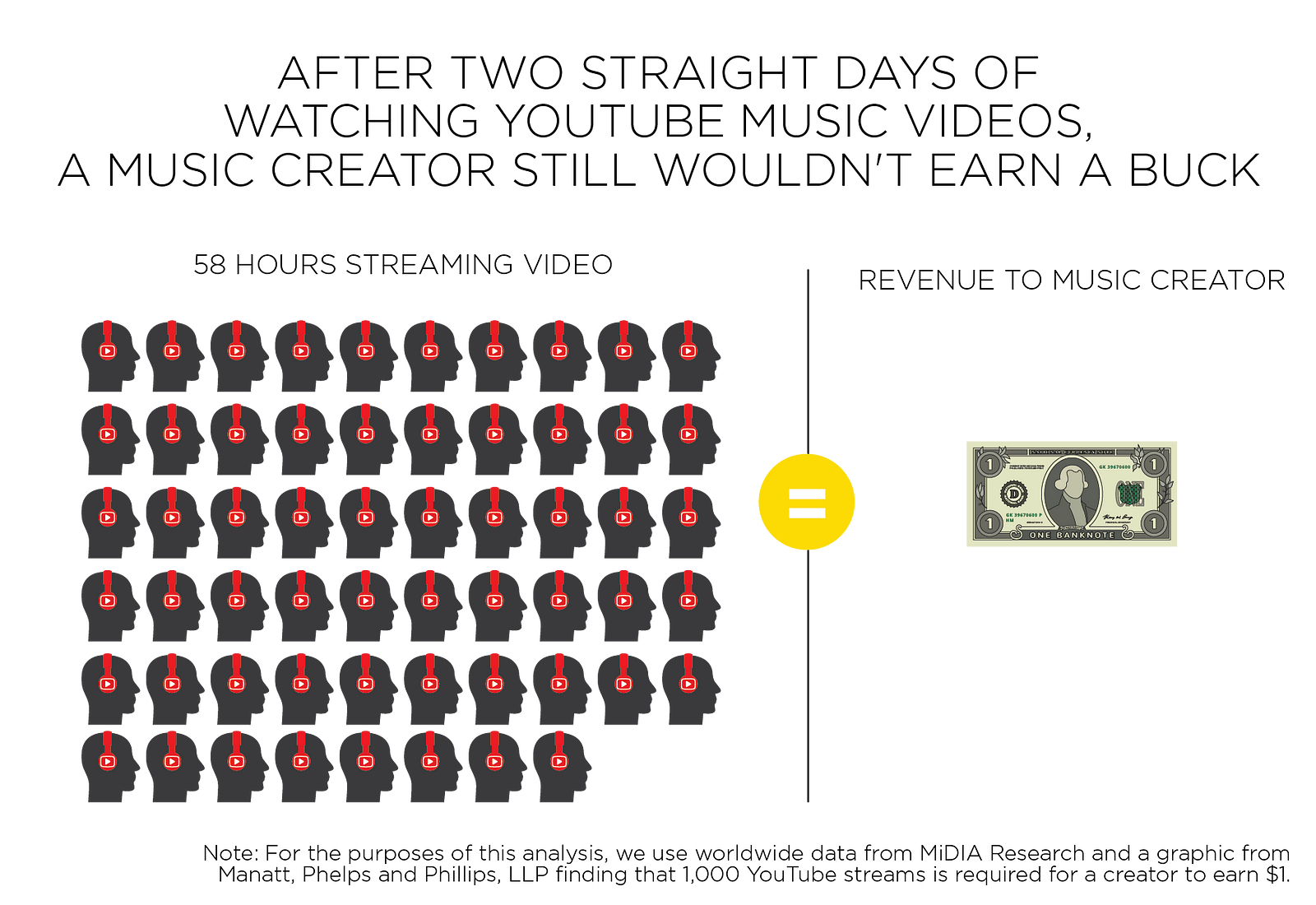RIAA Releases State Of Music Business Mid-2017: Streaming Subscriptions Drive Revenue Growth
Amazingly enough, 2017 is halfway gone already which means it's time to take stock of the music industry as a whole, looking at where revenue has increased and how companies have been able to adapt to a rise in the popularity of streaming.
__________________________
Guest post by Cary Sherman, Chairman & CEO of the RIAA on Medium
Today we report the state of the U.S. music business mid-way through 2017. Retail revenues for recorded music increased 17%, powered by 30 million music subscriptions and a talented array of artists and the professionals who support them. Our story continues to be one of great promise, but our footing is fragile, and a sustained, durable recovery is jeopardized by a fundamentally uneven playing field.
Two storylines continue to inform the narrative of the music business.
Music matters, music fuels
We’ve said it before, but it bears repeating and it is has never been more true: music is a ubiquitous presence that dominates our culture and commerce. That doesn’t happen by accident. Record labels continue to do their part, embracing new business models, partnering with more than 400 services worldwide to deliver music to fans instantaneously at the touch of a fingertip.
The pace of change embraced by record labels is staggering. Just two years ago, digital downloads was the largest format, and streaming was only beginning to take hold. Fast forward a few short years, and the business is already dramatically different.

More than any other creative industry, music is a digital business, with approximately 80% of our revenues coming from a wide array of digital services.

The labels we represent have also invested $4.5 billion in discovering, nurturing and promoting artists. We never lose sight of the most fundamental fact: great music drives everything. Look no further than the incredible artists who have garnered Gold or Platinum albums this year: 2 Chainz, Big Sean, Brett Young, The Chainsmokers, Chris Stapleton, DJ Khaled, Ed Sheeran, Future, Harry Styles, Imagine Dragons, Jay-Z, Kendrick Lamar, Khalid, Logic, Migos, Russ and Zara Larsson.
That investment, that innovation, that entrepreneurialism is welcome and hard-earned, but it should not be taken for granted. The fragile progress we have achieved so far is threatened by outdated or abused laws.
Not all streams are equal
We estimate that there may be a TRILLION streams in 2017, counting both on-demand services and digital radio (some 460 billion in first half of the year). Wrap your head around that staggering number. It is encouraging but also speaks to the foundational challenge that continues to confront the music community. To the fan, there is often little difference between the multitudes of services available, yet the payouts to creators are very different and vastly impacted by outdated or abused laws and regulations.
And that’s why a united music community continues to be incredibly animated about music’s “value gap” and calls upon policymakers — and our business partners — across the globe to do better and address these inequities (look no further than the massive response to YouTube’s recent self-congratulatory blog).
As you can see from the chart that my colleague Josh included in his summary of 2017 mid-year statistics, the amount of revenues that the three major categories of streaming generated is dramatically different, as is their disparate contribution to overall revenues.

Here’s another example of music’s value gap: how many hours of watching music videos would it take to generate a single dollar for music creators? An astonishing 58 hours.

We’re proud of the work we have done to foster a dynamic and diverse marketplace that serves the modern fan. We also realize there’s a lot more to do. For the second half of 2017, we look forward to more great music, and hope that that we can make more progress on addressing fundamental inequities that stymie music’s full potential.